THIS IS NEW ORLEANS - WWL - LOYOLA UNIVERSITY OF THE SOUTH
WITH STUDIOS IN THE ROOSEVELT HOTEL
Page 1
We have just begun to construct this web page for memories
of WWL radio and TV. The new page will be filled with memorabilia about
WWL radio and TV from their ealiest days to the present. Anyone who worked
at the WWL facilities or anyone who just wants to add to the site should
email Charlie Matkin at broadcastmuseum@neworleans.com. We hope to add a
lot of pictures, etc. in the near future. Thanks for your interest.
Just a reminder that this Virtual Broadcast Museum web site is a project
of non-profit New Orleans Radio Theatre, Inc.
Visit our new NORT web site
WWL in Loyola Classroom
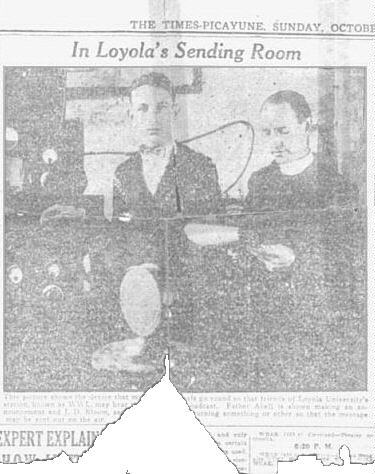
WWL, first "permanent" and commercially successful radio station in New
Orleans and Louisiana, was franchised, according to FCC records, March 31,
1922. The first station in New Orleans to be franchised by the U. S. government
was WGV, established by the Interstate Electric Company of New Orleans, on
March 21, 1922. In that same year WJBO was authorized on April 4 (later moved to
Baton Rouge),WAAB, owned by the Times-Picayune, was franchised on April 17, WAAC, owned by Tulane University and WBAM,owned by I. B. Rennyson on April 24. WCAG established by the New Orleans States newspaper was franchised on May 5, 1922.
The picture above is a scan of a fragment of the Sunday, October 25, 1925
newspaper. It was found in the trash thrown out by the new owners of WWL
radio when the station was sold by Loyola University. It was sent to
Paul Yacich by the person who found it. The picture shows Father Orrie Abell
of Loyola University and J. D. Bloom (recently graduated from Jesuit High
School - Class of 1925) who eventually became WWL AM-FM-TV Chief Engineer
and the 10 watt WWL of 1922 became a 50,000 watt Deep South powerhouse
clear channel station heard nationwide and as far as the Hawiian Islands.
At the lower right corner of the clipping is a smidgeon of the Times-
Picayune's radio schedule. Note that it shows programs from stations all
over the country. Since there were few stations (578) it was easy to listen to
the distant stations (Broadcast band DXing). Mentioned in the clip are WEAR at
389.4 KC (Cleveland), WEAF at 490.5 KC, WEEL, WWJ and WCAE.
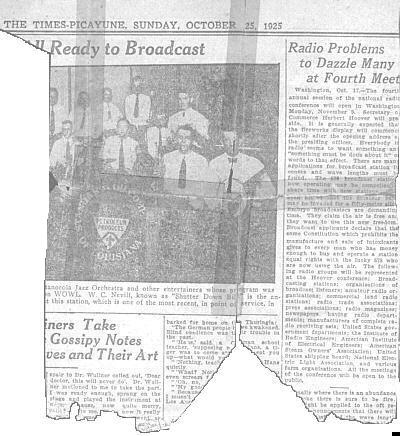
The other side of the 1925 Picayune fragment shows part of a picture of
a jazz orchestra whose program was heard on WOWL. The clip mentions an
announcer named W. C. "Shutter Down Bill" Nevill. The picture announces
"WOWL Ready to Broadcast" and indicates that the station is the most
recent (authorized in July of 1923) in New Orleans. WOWL broadcast with
100 watts on 1110KC and was owned by the OWL BATTERY COMPANY. The station
closed in 1926 and the call letters, WOWL, now reside elsewhwere in the
United States.
The article to the right of the picture is of interest to all
broadcasters. It is shown in close-up below.
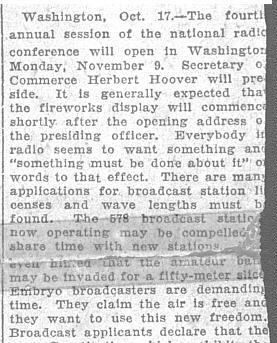

Marquette Hall - Birthplace of WWL - 1922
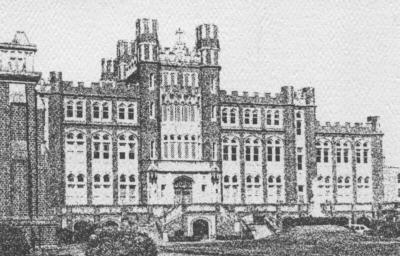
Bobet hall - Home of the 5000 watt WWL - 850 KC - in 1929
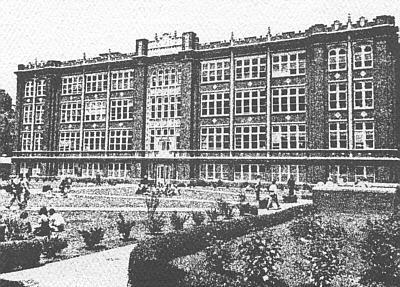
The "new" WWL 5000 watt transmitter
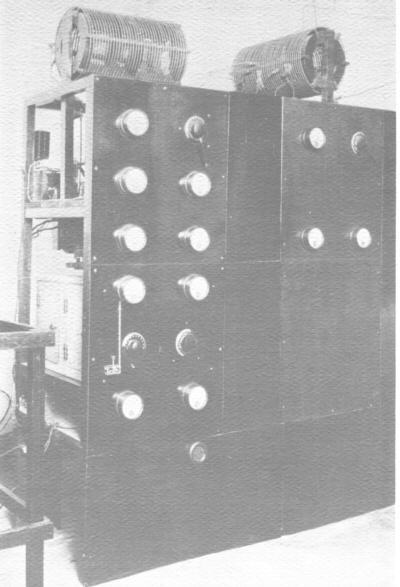
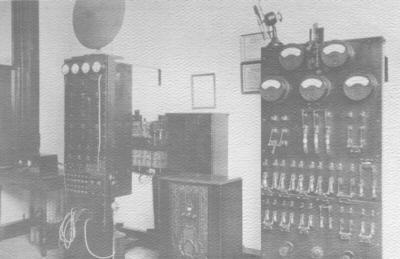
The two pictures above show the 5000 watt transmitter
installation in Loyola's Bobet Hall. Special attention should be given to
the high-tech cooling system in top of the transmitter power panel in the
second picture.
WWL General Manager Howard Summerville and Chief Engineer J. D. Bloom
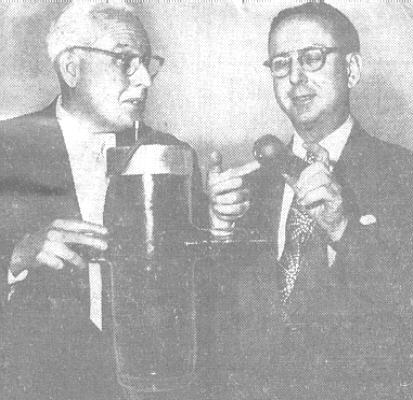
In the picture above, WWL Chief Engineer J. D. Bloom and WWL General
Manager Howard Summerville compare the sizes of tubes used in WWL
transmitting equipment. The tiny tube in Bloom's hand is from an
early 10 watt transmitter used in 1922 when the station was broadcasting
from a classroom at Loyola University. The giant vacuum tube held by
Summerville is used in the high-power 50,000 watt transmitter.
In the picture below, Jefferson Davis Bloom, shows the tubes in a better
picture.
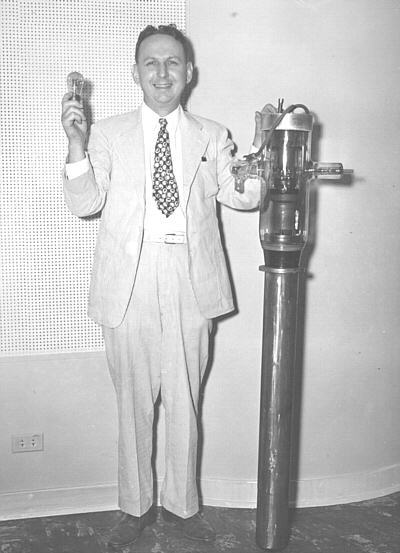
The Deep South Radio Powerhouse - WWL's 50,000 watt transmitter (Late 30's)
Pride and Joy of the WWL Engineering Department
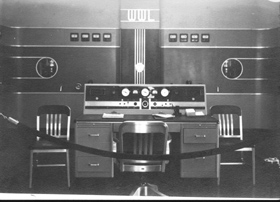
With the advent of television, J. D. took pleasure in showing an Image
Orthicon, the picture pick-up tube of early television cameras as seen in
the picture below.
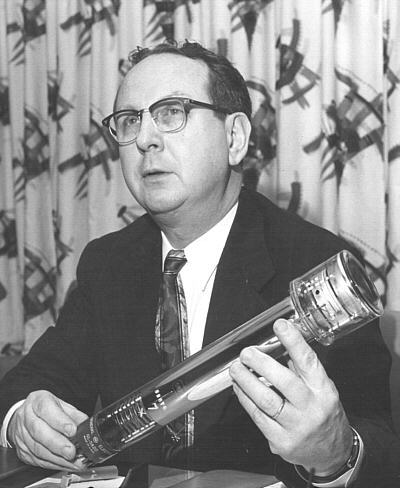
Here's J. D., again, this time in an ad for General Electric Image Orthicons
As a matter of fact, J. D. was seen in so many pictures holding tubes he
took quite a bit of kidding about it. He was told he should teach a course
at Loyola in Tube Holding 101.
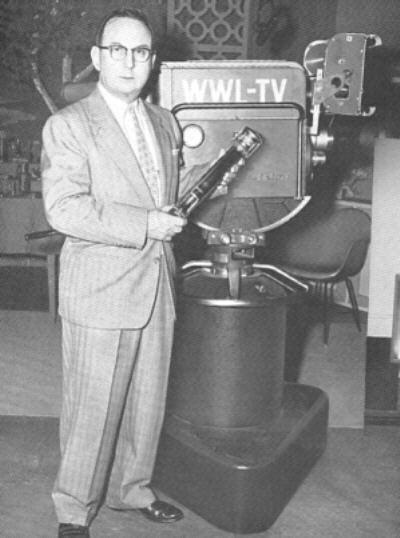
Entrance to WWL Studios - 2nd Floor - Roosevelt (Faitmont) Hotel

WWL Control Room
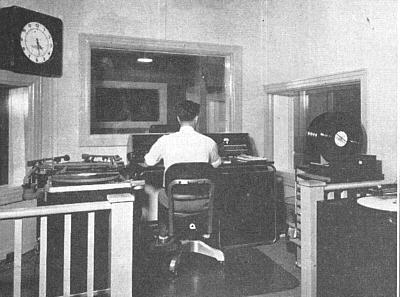
ON AIR - Studio program in progress
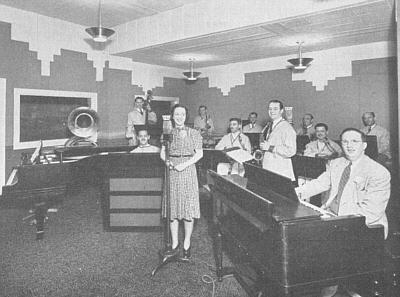
The University Room of the Roosevelt Hotel as a WWL studio
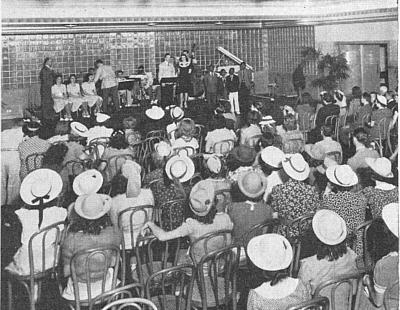
The Hurricane of 1947
A newpaper story reports thet the Chief Engineer of WWL was in danger of
drowning as he tried to reach the flooded WWL transmitter site in Kenner
at the lakefront. J. D. Bloom is shown in the picture below as he perched
for 9 hours on the hood of a truck that stalled in the high water on
Williamson Ave. near the lakefront.
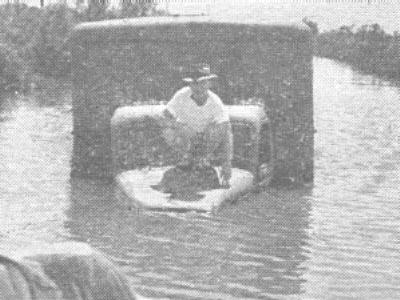
Pictured below are views of the WWL tower site, transmitter building and
downed power lines in the rising waters of "Lake WWL" in Kenner near the
edge of Lake Pontchartrain.

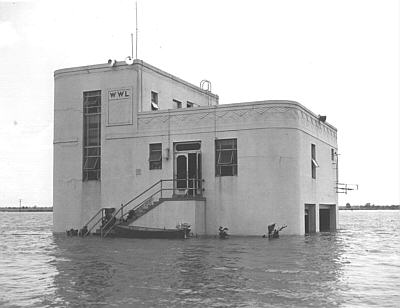
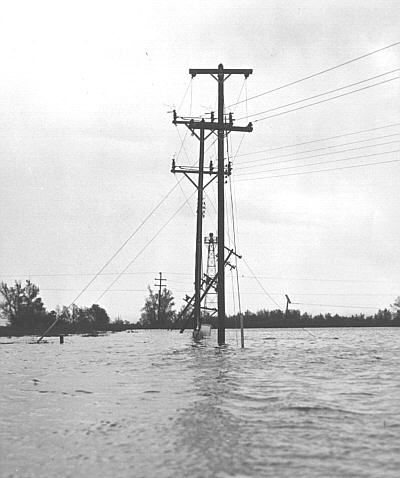
WWL Transmitter building - in better weather!
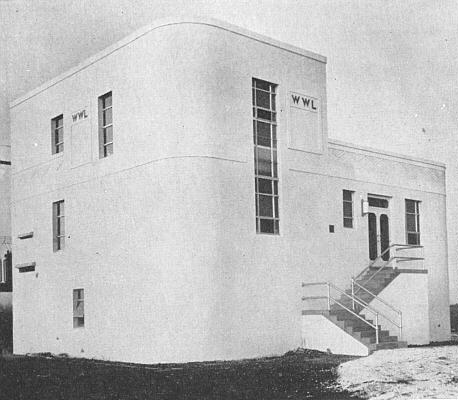
GO TO WWL Page 2
******************************
GO TO WWL Page 3
GO TO WWL-TV
GO TO WWL-TV PERSONNEL Page 1
GO TO WWL-TV PERSONNEL Page 2
GO TO WWL-TV ON AIR PAGE 1
GO TO WWL-TV ON AIR PAGE 2
GO TO FREELANCE TALENT
GO TO WWL MEMBERS OF THE GNOBA HALL OF FAME
RETURN TO BROADCAST ARTS MUSEUM
For more New Orleans radio and television memories:
GO TO
"NEW ORLEANS RADIO AND TV SHRINE"
























